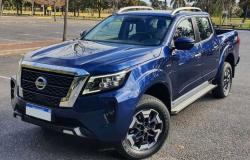Lithium batteries are expensive to produce and difficult to recycle. It is also claimed that lithium mining is dangerous. Manufacturers are studying other metals to see what they can offer.
ADVERTISING
The lithium batteries have revolutionized electric vehicles in recent years. They are also used in other products, such as mobile phones, vaping devices, solar energy storage systems, electric toothbrushes, tools, and laptops.
On average, an electric vehicle battery uses about 8kg of lithium, but some can consume much more. Some of Tesla’s batteries, for example, use about 62.6 kg of lithium.
lLithium batteries can be expensive Since lithium is a difficult material to extract, they require an enormous amount of water and heavy metal technology for their production. Lithium mining also causes mineral waste, as well as soil erosion and water pollution.
The lithium extraction It has been closely associated with unethical practices, such as child and forced labor, especially in countries where metal is abundant, such as the Democratic Republic of the Congo (DRC).
In addition, they are also difficult to recycle, which causes high annual waste. Some companies are now looking for others alternatives to lithium batteries. This remains a challenge, because lithium is still considered vital for the transition to green energy, and investments and exploration of new alternatives are still lacking.
Is manganese a viable alternative to lithium batteries?
manganese batteries have recently attracted attention as possible alternatives to lithium. Typically, cobalt, nickel and lithium are the most in-demand metals for electric vehicle batteries, but manganese is also useful.
It is a cathode material in electric cars, designed to increase their safety aspect, energy density and profitability. An average electric vehicle battery contains about 20 kg of manganese and 14 kg of cobalt.
Manganese is cheaper to extract than lithium and there is much more quantity available. With cobalt mining embroiled in several human rights issues, and most of the nickel mined unsuitable for use in electric vehicles, there is growing interest in manganese in batteries.
Martin Kepman, CEO of the Canadian mining company Manganese X Energy Corp, stated in an interview: “Manganese is a candidate for disruption in the lithium-ion battery space. It has elemental qualities that can improve density, capacity, rechargeability, Battery safety and longevity. “The timing for establishing a North American manganese resource could not be better.”
“With the global push towards greener technology and reducing carbon footprint, Manganese smartphones and storage power reserves, up to electric and hybrid vehicle industry“.
Tesla and Volkswagen are two of the most prominent companies exploring the use of manganese batteries right now, and Elon Musk has recently stated that manganese batteries have “potential” to drive the global transition.
Manganese is typically used in combination with lithium in a number of batteries such as lithium manganese oxide (LMO), lithium iron manganese phosphate (LiFeMnPO4) and lithium manganese spinel batteries, which It is a cathode.
The batteries of nickel, manganese and cobalt oxide (NMC) They are also popular today. According to the International Energy Agency (IEA), NMC batteries will represent 60% of the market share in 2022, lithium ferrophosphate (LFP) almost 30% and nickel cobalt aluminum oxide (NCA) approximately the 8%.
However, even though Greater use of manganese may be a good option to reduce the need for nickel or cobalt in lithium batteriesCurrently, most manganese is still used alongside lithium in EVs, so more research and development may be needed before manganese can be the dominant metal in EV batteries.
Other alternatives to lithium batteries
Another of the rising alternatives to lithium batteries is sodium ion battery. They are energy efficient, charge quickly and are stable at extreme temperatures, offering great protection against overheating.
Furthermore, also They are considerably less toxic than other battery options as they do not include copper, lithium, cobalt or nickel, which can cause contamination in the extraction process and can be a potential fire hazard.
However, these batteries They do not store as much energy as lithium ones, meaning they may not be suitable for wide-scale adoption. Additionally, because sodium-ion batteries are still a relatively new technology, their supply chain and availability are not as developed as lithium batteries.
The zinc-ion batteries They are another technology that has sparked more interest lately. It is considered more environmentally friendly than lithium, and there is a lot of it, making it cheaper and easier to extract.
Zinc batteries require little maintenance and do not have to be constantly monitored for safety and performance reasons. They have a wide operating temperature and a low output power, making them ideal options for low-power applications such as flashlights and remote controls. However, zinc batteries have a medium density compared to lithium batteries, which means they cannot store as much energy.
Another alternative to lithium batteries are solid state batteries, much more compact, powerful and sustainable, especially for electric vehicles. Not only that, but solid-state batteries are smaller and lighter than lithium batteries. They are also safer, with greater capacity and autonomy and a lower carbon footprint.
Have faster recharging capabilities, and can be recharged in 10 or 15 minutes, compared to a time of between 20 minutes and 12 hours for lithium batteries. However, the disadvantage is that solid state batteries are more expensive to produce and supply chains are still developing.






